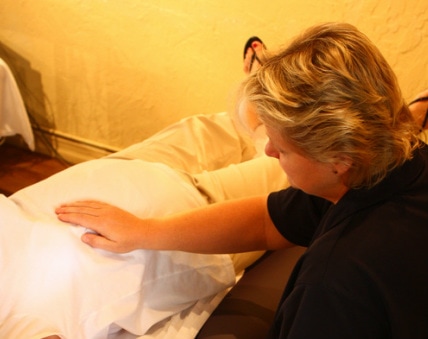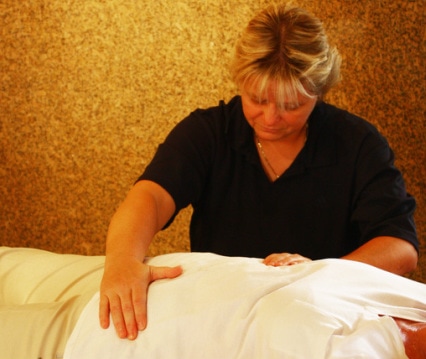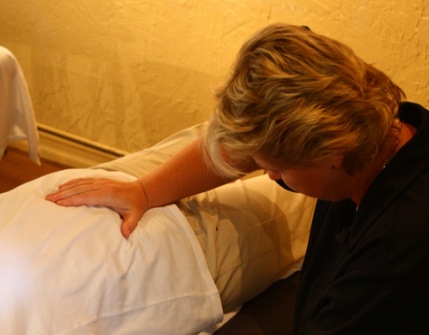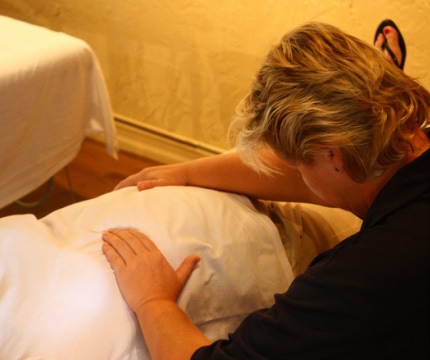What is Visceral Manipulation?
"Viscera" relates to the internal organs of the body, such as the liver, kidneys and intestines. Visceral Manipulation is a gentle manual therapy that aids your body's ability to release restrictions and unhealthy compensations that cause pain and dysfunction. Visceral Manipulation, or VM, does not focus solely on the site of pain or dysfunction, but evaluates the entire body to find the source of the problem. The VM therapist feels for altered or decreased motion within the viscera, as well as restrictive patterns throughout the body and then applies VM techniques. VM therapy re-establishes the body's ability to adapt and restore itself to health.
"Viscera" relates to the internal organs of the body, such as the liver, kidneys and intestines. Visceral Manipulation is a gentle manual therapy that aids your body's ability to release restrictions and unhealthy compensations that cause pain and dysfunction. Visceral Manipulation, or VM, does not focus solely on the site of pain or dysfunction, but evaluates the entire body to find the source of the problem. The VM therapist feels for altered or decreased motion within the viscera, as well as restrictive patterns throughout the body and then applies VM techniques. VM therapy re-establishes the body's ability to adapt and restore itself to health.
How Do Organs Contribute to Pain and Dysfunction?
Your body is made up of many interrelated components such as bones, muscles, nerves, a thin connective tissue called fascia, as well as the internal organs (viscera). Your organs are in perpetual motion. When you breathe, walk and stretch, your organs move in your chest and abdomen. For example, when you take a breath, your kidneys move one inch; and with deep inhalation, they move 4 inches. In a day, they move a little over 1/2 mile. That's around 19,000 miles a lifetime!
This movement of organs is transmitted through fascia to other structures of the body. When you are healthy, all structures move with an interconnected fluidity. All of this movement is important as it influences activities throughout the body from the tiniest cellular pulsations to rhythmic contractions of the heart and blood flow. Optimum health relies on a harmonious relationship between the motions of the organs and other structures of the body.
There are many reasons for an organ to lose its mobility: physical traumas, surgeries, sedentary lifestyle, infections, pollution, bad diet, poor posture and pregnancy/delivery. When an organ is no longer freely mobile but is fixed to another structure, the body is forced to compensate. This disharmony creates fixed, abnormal points of tension and the chronic irritation gives way to functional and structural problems throughout the body - musculoskeletal, vascular, nervous, urinary, respiratory and digestive, to name a few.
Imagine scar tissue around the lungs. Because of the pull of the adhesion, with every breath, the movement patterns of the nearby structures would be altered. This could shift rib motion creating pulls on the spine. These restrictions might then show up as mid-back and neck pain, as well as limited motion in the shoulder. This scenario highlights just one of hundreds of possible ramifications of a small dysfunction - magnified by thousands of repetitions each day. This also explains how pain can often be far removed from the actual cause.
Your body is made up of many interrelated components such as bones, muscles, nerves, a thin connective tissue called fascia, as well as the internal organs (viscera). Your organs are in perpetual motion. When you breathe, walk and stretch, your organs move in your chest and abdomen. For example, when you take a breath, your kidneys move one inch; and with deep inhalation, they move 4 inches. In a day, they move a little over 1/2 mile. That's around 19,000 miles a lifetime!
This movement of organs is transmitted through fascia to other structures of the body. When you are healthy, all structures move with an interconnected fluidity. All of this movement is important as it influences activities throughout the body from the tiniest cellular pulsations to rhythmic contractions of the heart and blood flow. Optimum health relies on a harmonious relationship between the motions of the organs and other structures of the body.
There are many reasons for an organ to lose its mobility: physical traumas, surgeries, sedentary lifestyle, infections, pollution, bad diet, poor posture and pregnancy/delivery. When an organ is no longer freely mobile but is fixed to another structure, the body is forced to compensate. This disharmony creates fixed, abnormal points of tension and the chronic irritation gives way to functional and structural problems throughout the body - musculoskeletal, vascular, nervous, urinary, respiratory and digestive, to name a few.
Imagine scar tissue around the lungs. Because of the pull of the adhesion, with every breath, the movement patterns of the nearby structures would be altered. This could shift rib motion creating pulls on the spine. These restrictions might then show up as mid-back and neck pain, as well as limited motion in the shoulder. This scenario highlights just one of hundreds of possible ramifications of a small dysfunction - magnified by thousands of repetitions each day. This also explains how pain can often be far removed from the actual cause.
Dr. Gotter connecting the two organs through visceral emotional listening.
Emotions are Stored in the Organs
It is well documented that our emotions have a great impact on how our body functions, and this is greatly due to how receptive organs are to our feelings. Different emotions affect different organs. Emotional reactions can translate into simple spasms in the gall bladder to heartburn, vomiting, feeling faint, ulcers, and serious diseases. When the brain receives negative emotions it sends tension to the related organ, the organ then sends tension back to the brain resulting in a vicious cycle. Conversely, a physically damaged or imbalanced organ can stimulate emotional upset. VM can break this cycle, enhance the health of the organ, and restore emotional balance.
What Does it Feel Like?
VM is a soft, hands-on manual therapy. Underneath the pain or diagnosis is a compensatory pattern created in the body with the initial source of the dysfunction often being far from where the pain is felt. Because of this, the practitioner searches for this pattern and the source, and treats the related tissues. The treatment is a gentle compression, mobilization and elongation of the soft tissues. As the source of the problem is released, the symptoms will start to decrease.
For further information about Visceral Manipulation go to The Barral Institute
(All above information obtained from The Barral Institute)
It is well documented that our emotions have a great impact on how our body functions, and this is greatly due to how receptive organs are to our feelings. Different emotions affect different organs. Emotional reactions can translate into simple spasms in the gall bladder to heartburn, vomiting, feeling faint, ulcers, and serious diseases. When the brain receives negative emotions it sends tension to the related organ, the organ then sends tension back to the brain resulting in a vicious cycle. Conversely, a physically damaged or imbalanced organ can stimulate emotional upset. VM can break this cycle, enhance the health of the organ, and restore emotional balance.
What Does it Feel Like?
VM is a soft, hands-on manual therapy. Underneath the pain or diagnosis is a compensatory pattern created in the body with the initial source of the dysfunction often being far from where the pain is felt. Because of this, the practitioner searches for this pattern and the source, and treats the related tissues. The treatment is a gentle compression, mobilization and elongation of the soft tissues. As the source of the problem is released, the symptoms will start to decrease.
For further information about Visceral Manipulation go to The Barral Institute
(All above information obtained from The Barral Institute)
Proudly powered by Weebly



